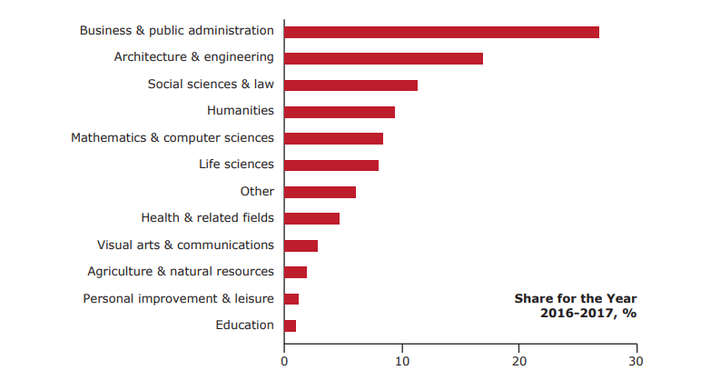
In the endless debate over Canada’s high house prices and rising rents, foreign buyers have become the most popular target for blame, and a popular target for policy action now, too.
But the problem may have more to do with a somewhat different group of people landing on our shores, and the fact no one is building housing for them: international students.
The number of students from abroad in Canadian universities and colleges is rising rapidly, up 119 per cent between 2010 and 2017, according to data from the Canadian Bureau for International Education (CBIE), which estimates there were 435,415 international students in Canada at the end of 2018.
Watch: Why rents are soaring in Canada, and what we can do about it. Story continues below.
Add to that the fact that a larger share of Canadians than ever are attending university or college, and that they are staying in those schools longer, and it becomes a recipe for soaring demand.
“These incoming foreign students need somewhere to live, and with the increased population growth, there will be pressure on the housing market in university towns,” said a recent report from the Real Estate Investment Network, which found that rents and house prices are higher nearer to universities and colleges, all other things being equal.
As an example, the report pointed to the university town of Kingston, Ontario, home to Queen’s University. Despite negligible population growth, it has a shockingly low apartment vacancy rate of just 0.6 per cent.
Cities with the largest shortages of student beds

Even Charlottetown, P.E.I., is reporting a shortage of student accommodations, while in larger cities like Ottawa ― estimated to have one of the largest shortages of student housing ― students are reporting skyrocketing rents, a problem made worse for some by cutbacks to provincial student assistance.
In Canada, the supply of housing near post-secondary schools ― many of them in built-up urban areas ― isn’t responding to the influx like it has in other countries that have seen a flood of international students, such as the U.S. and U.K.
Canada is “10 to 15 years behind other countries” in developing off-campus student housing, a managing partner at a Toronto real estate investment trust told the authors of the REIN report.
It estimated that just three per cent of Canadian university students live in purpose-built, off-campus housing, versus 10 per cent in the U.S. and 12 per cent in the U.K.
In a report earlier this year, CIBC estimated that Canada is short about 300,000 housing units, largely because international students aren’t counted as “residents” in the data. And no one builds houses for a population that “isn’t there.”
Yet it is there, and it’s flooding the real estate market with new money. In British Columbia ― where the number of international students quadrupled in the past decade, according to numbers cited at Western Investor ― the typical international student spends $12,000 a year on housing.
The REIN report sees this as an opportunity for investors, noting that house prices and rents are higher near universities, all other things being equal. Yet the report concedes that the presence of investors in university housing may be making house prices and rents more volatile in those areas.
What are international students studying in Canada?

“Because real estate close to a post-secondary institution may be attractive to investors, it is possible that investors are the first to buy when there’s an opportunity. … But investors are also the first to leave when there’s a downturn.”
So far, the problem continues to fly under the radar, and as long as that’s the case, students themselves are likely to find themselves bearing the brunt of the crisis ― and not only through excessive housing costs. In a tight housing market, many students may find themselves exploited.
Students in Kitchener-Waterloo are complaining about leases being inexplicably cancelled at the last minute. In other cities, authorities are waking up to the reality of students living in hazardous, substandard rental units.
Eventually, policymakers will need to respond to this growing crisis. But first they will have to realize it exists. Let’s hope that happens sooner rather than later.